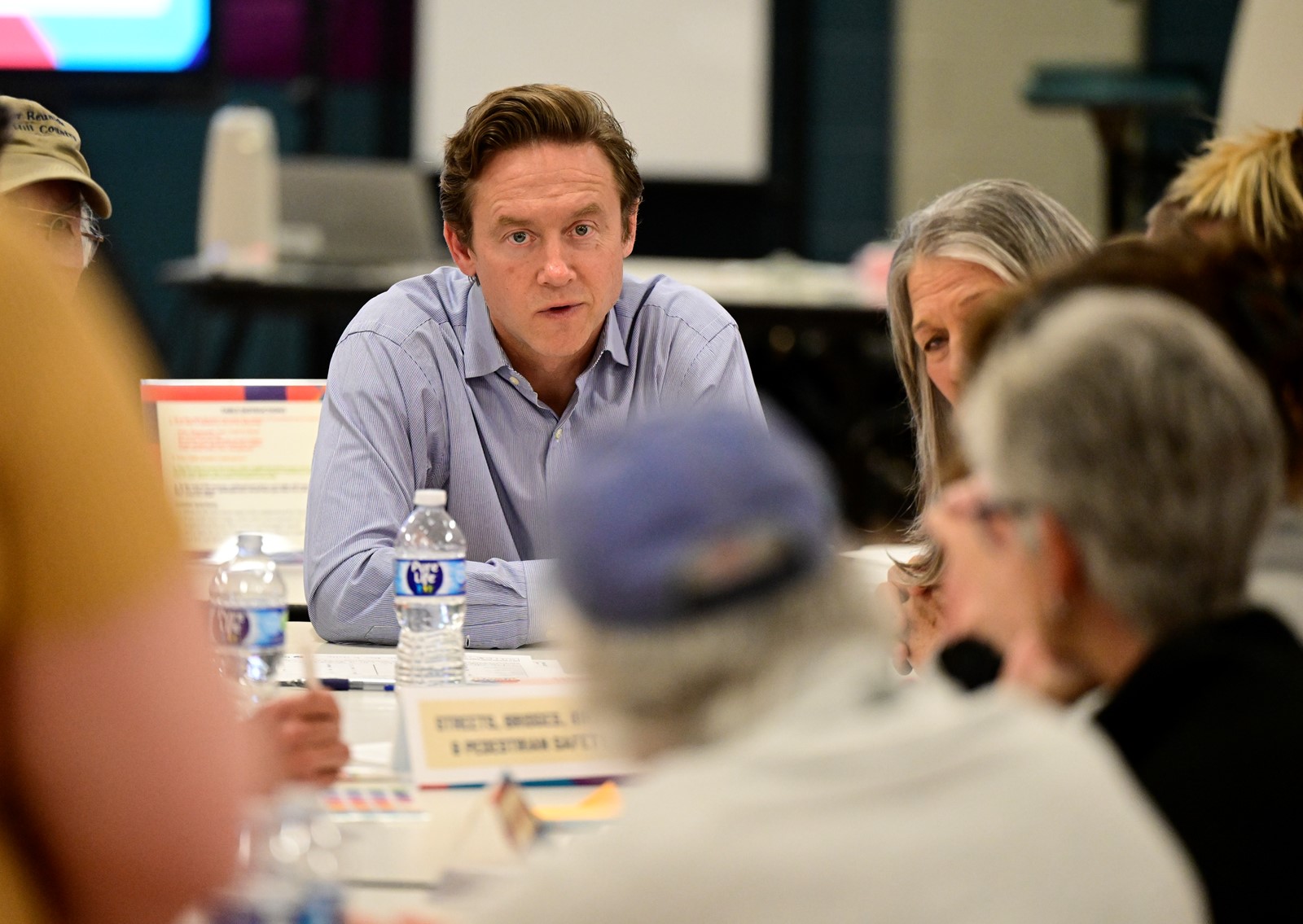
Mayor Mike Johnston’s team has begun negotiating with each of the City Council’s 13 members after their frustrations with a proposed roster of bond projects boiled over this month.
The city would pay for projects such as road and park improvements by issuing debt — in the form of a general obligation bond — if voters approve the “Vibrant Denver” bond package in November. This year city officials estimated the proposal would reach about $800 million, but this week they said the project list added up to nearly $1 billion.
Before voters get a say, the council has to give its stamp of approval and settle on a final project list with the mayor. That could be difficult if a recent committee meeting — which included tense exchanges between the mayor’s staff and council members — is any indication.
“I think there’s still work to be done,” Councilwoman Diana Romero-Campbell said.
“You don’t have seven votes to refer this to the ballot,” said Councilwoman Amanda Sawyer, referring to the majority threshold needed to place the item on the ballot. “Somebody needs to fix this quick.”
“I don’t see it happening,” Councilman Paul Kashmann said of the proposed timeline.
Council members have become increasingly vexed by the Vibrant Denver bond process, calling it rushed. In some cases, council members don’t think the projects it would fund would be beneficial enough for their districts.
The irritation peaked after the mayor’s office last week sent out the bond executive committee’s list of recommended projects without any dollar amounts attached to them.
The list included projects such as repairs to bridges and underpasses, new pedestrian crossings, Santa Fe Drive improvements, construction of the Denver Children’s Advocacy Center’s Children’s Justice Center, and new safety lighting along the Cherry Creek and Highline Canal trails. It also included a project to begin converting the former Park Hill Golf Course into a city park.
The bond issuance wouldn’t increase taxes — because payments would replace retiring debt — and wouldn’t impact the general fund budget, which mostly pays for personnel and day-to-day operations. That is the part of the city budget that Johnston recently announced has a $250 million shortfall over two years.
Now the mayor’s office is meeting with each member of the council to try to tinker with the list and persuade them to support it.
Last week’s proposal recommended 48 projects and would have amounted to about $970 million total. An updated list, which was still being discussed Wednesday, added eight more projects while whittling down the total cost — by dropping some costly projects — to require $50 million less in debt.
The largest share of the revised project list — about 43% of the dollars — is set aside for “connectivity” ideas such as road and pedestrian improvements. An additional 41% of the debt would be for parks and cultural facilities. About 15% would be for public health and safety.
Each of the 11 council districts now has four to six projects, said Laura Swartz, a spokeswoman for the Department of Finance. Two council members are elected at large.
The new list still includes some of the major street projects, including updates to bridges, Santa Fe Drive between Sixth and 13th Avenues, and West 38th Avenue between Sheridan Boulevard and Fox Street. It also still includes finding a location for an American Indian Cultural Embassy as well as designing it and preparing a site — but not construction.
The new concept also includes traffic signal improvements along Evans Avenue and site research for a future recreation center in Council District 4, which covers far-southeast Denver.
The mayor’s staff withdrew a proposal to build a bridge over Airlawn Road at North Quebec Street.
The specific amounts allocated to each project are still under discussion.
“There may be additional changes,” Swartz said.
Johnston’s team is set to present the final list, which hasn’t yet been made public, to the council during a committee meeting next Tuesday. The council also will have a chance to offer amendments as it considers the proposal.
Johnston presented some of the most recent changes this week during his regular meeting with the council.
“There’s always more capital improvements to be done than we have dollars available,” he told them. “The bond is a chance to try to catch up.”
Council members, several of whom have complained before about feeling rushed by the mayor on his initiatives, still had concerns about the process this week. Swartz said there had been progress with council members after the one-on-one meetings.
During Tuesday’s public meeting with Johnston, Councilman Darrell Watson indicated he was ready to work with the mayor’s staff to make sure the bond goes through.
“This bond is necessary,” he said. “I know there is a way for us to get to a bond that can be presented and that can pass in November.”
The council has until Aug. 25 to give final approval for the bond to appear on the November ballot. Still to come are committee approval and two readings before the full council.
A public hearing has been set for the July 28 council meeting.


 PREVIOUS ARTICLE
PREVIOUS ARTICLE
